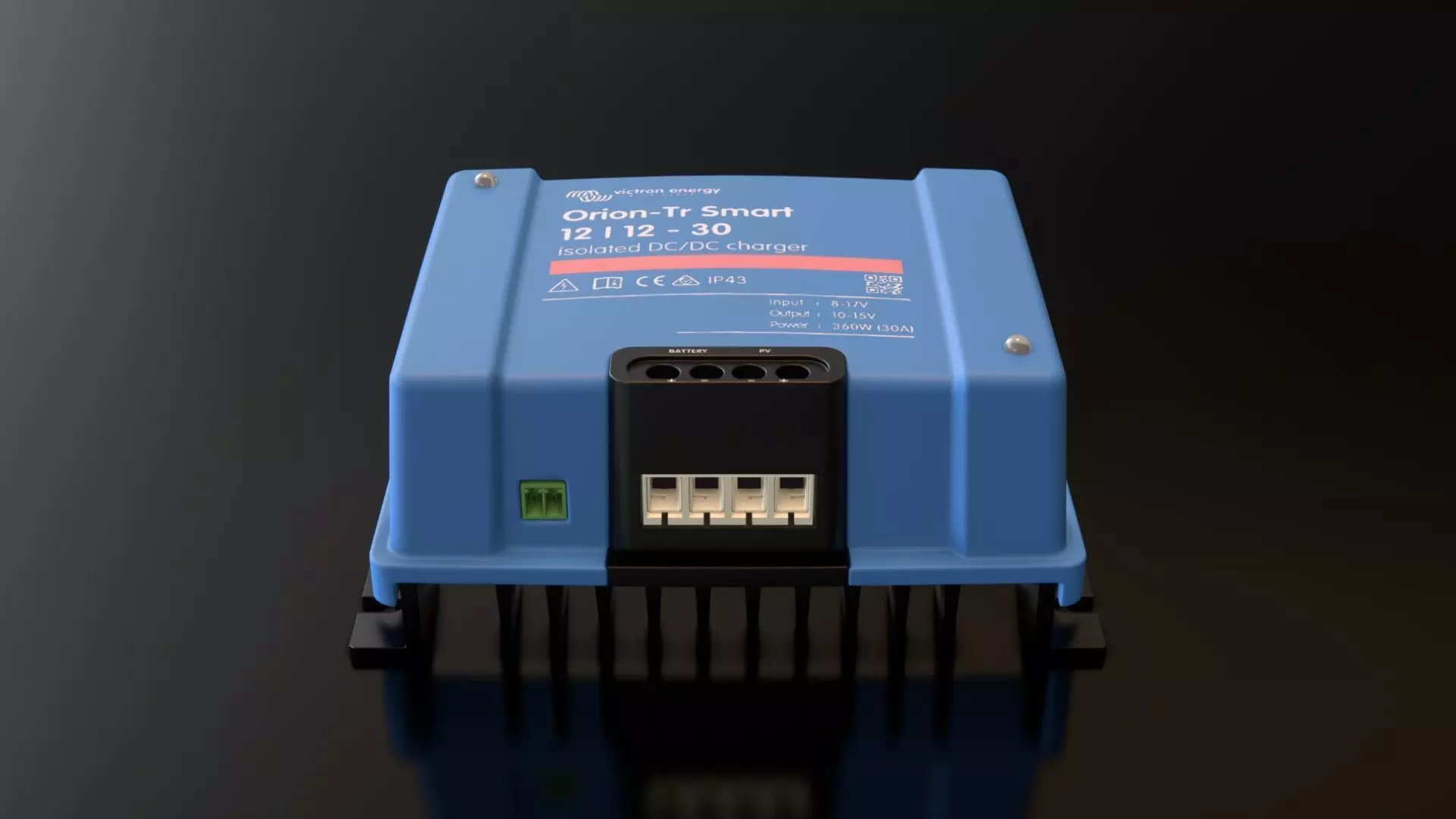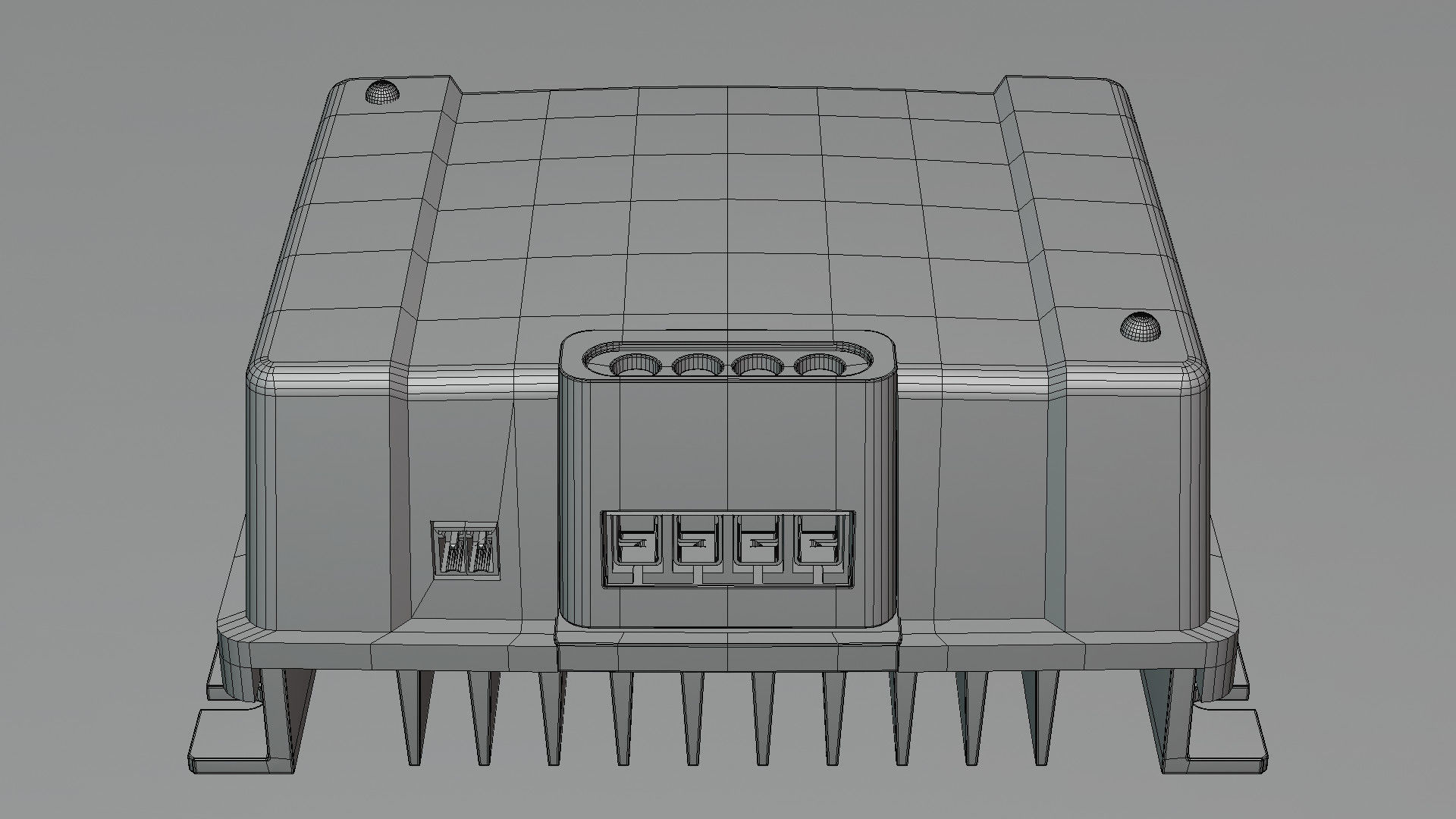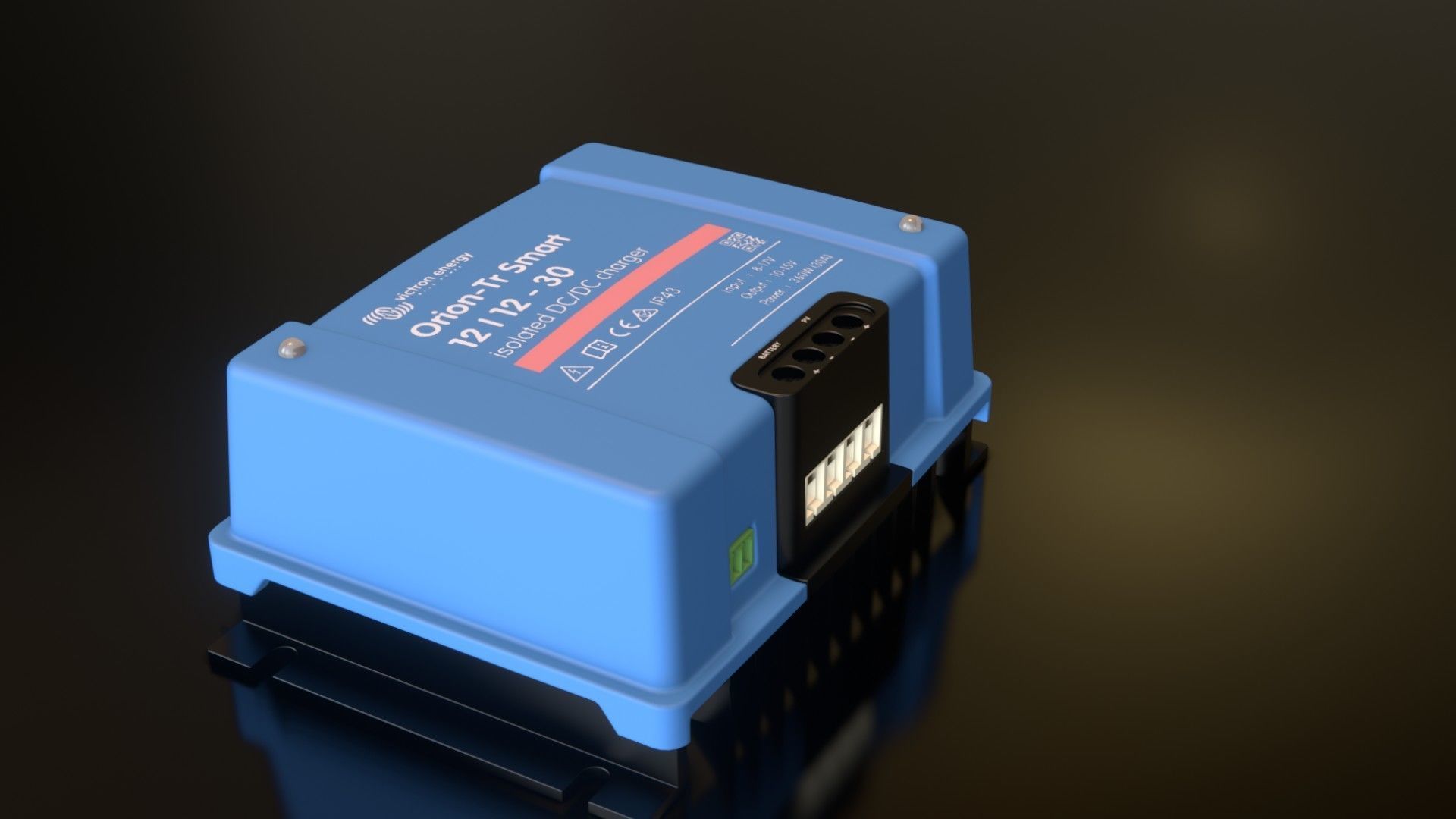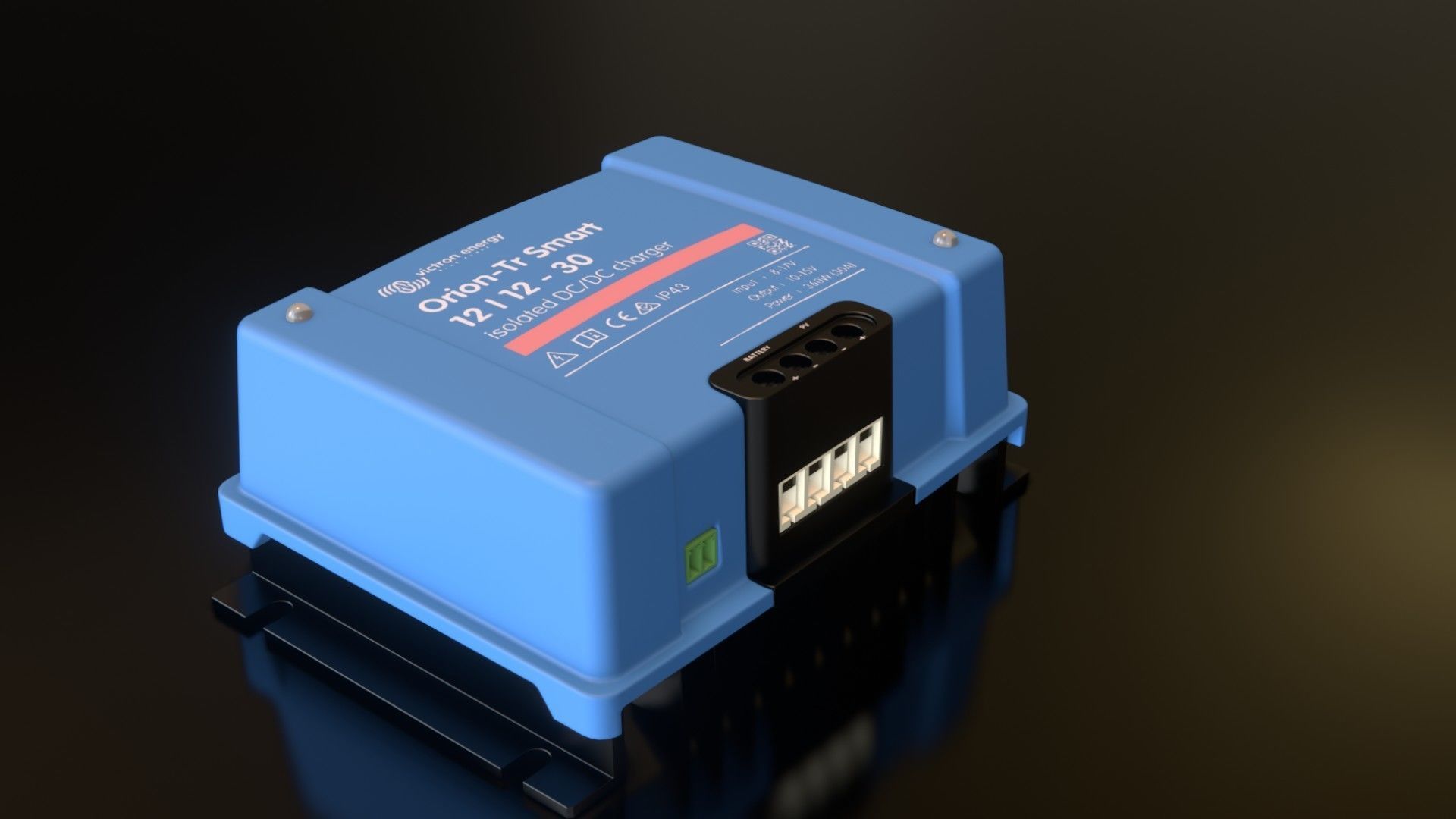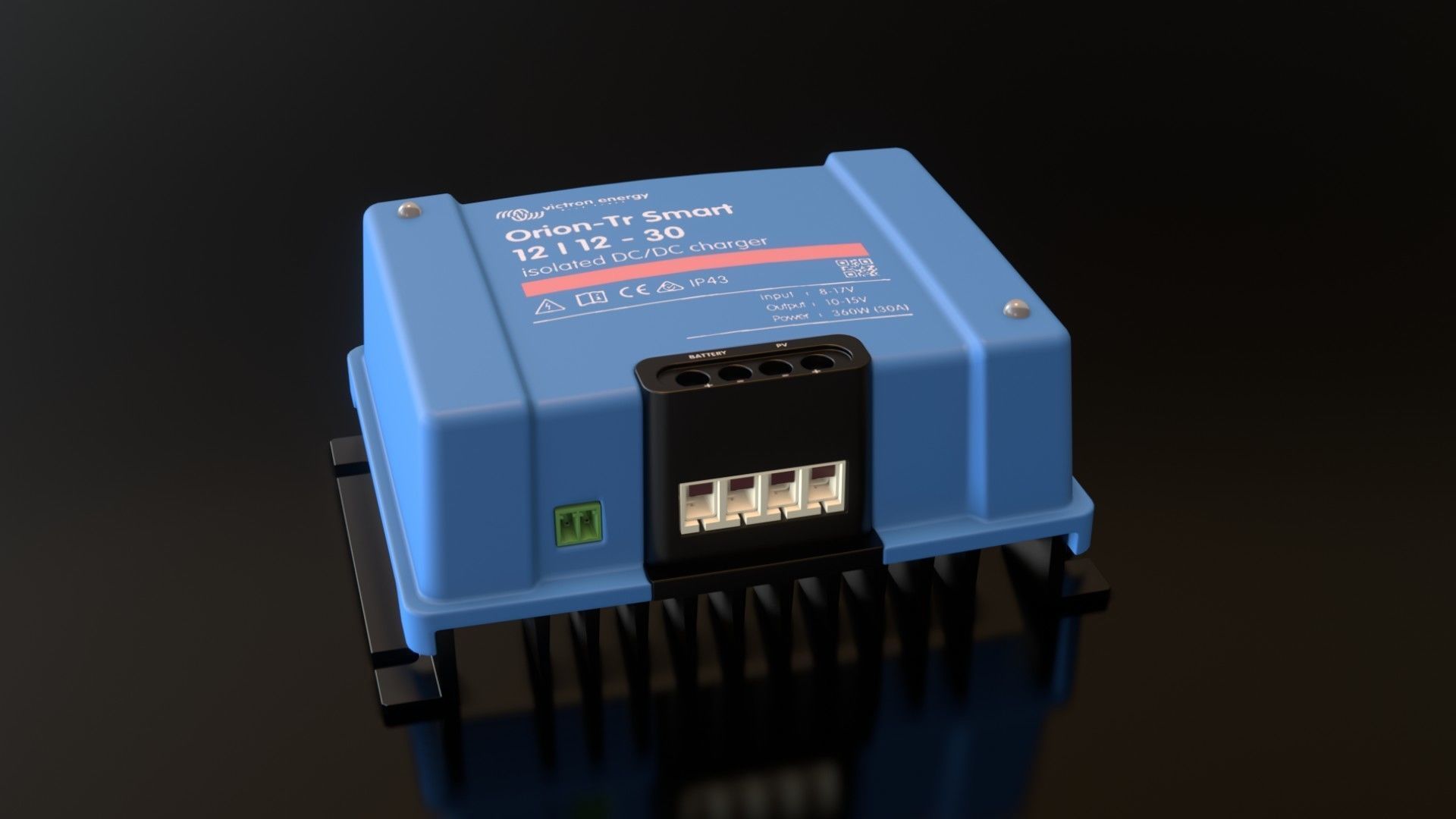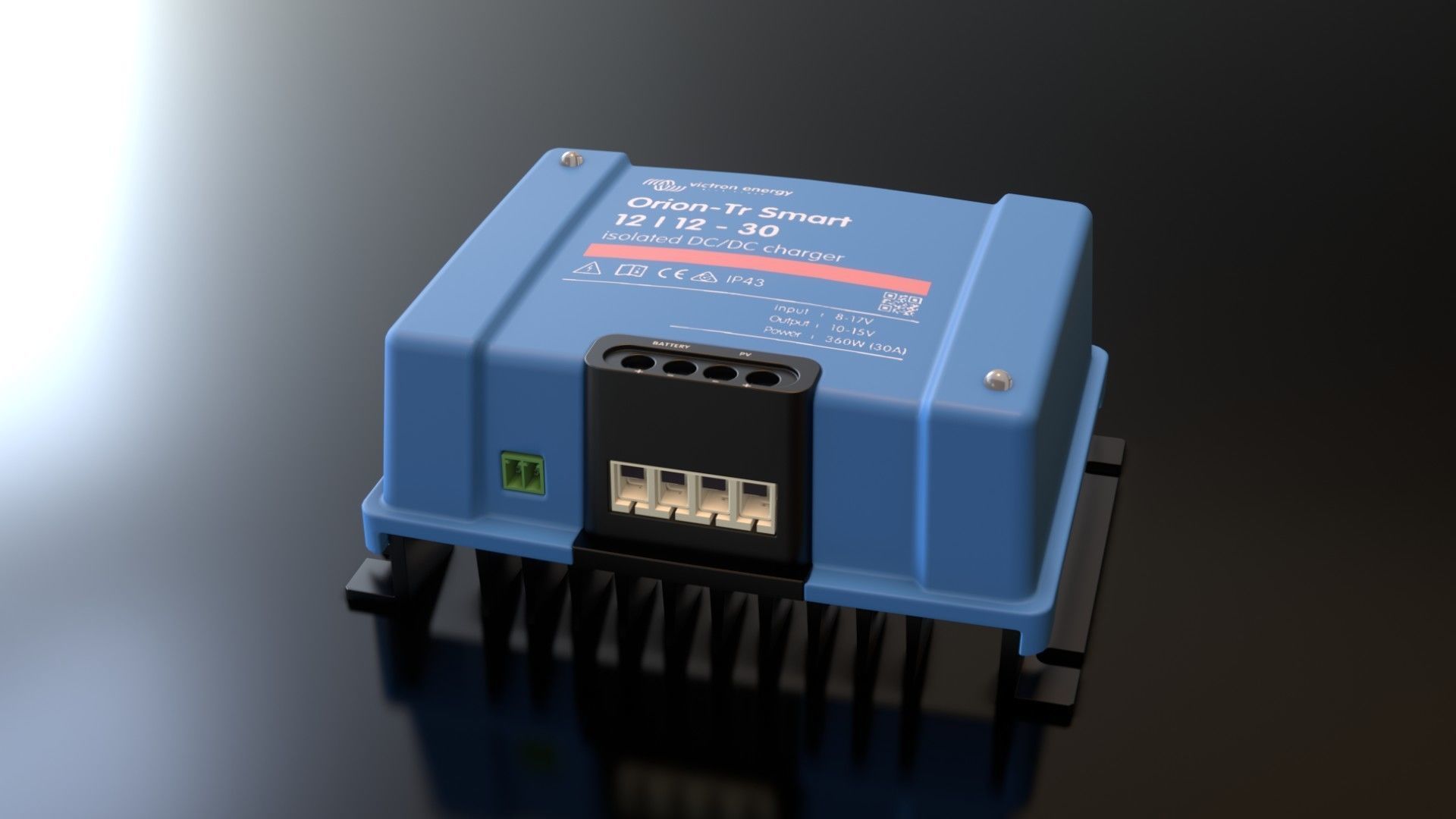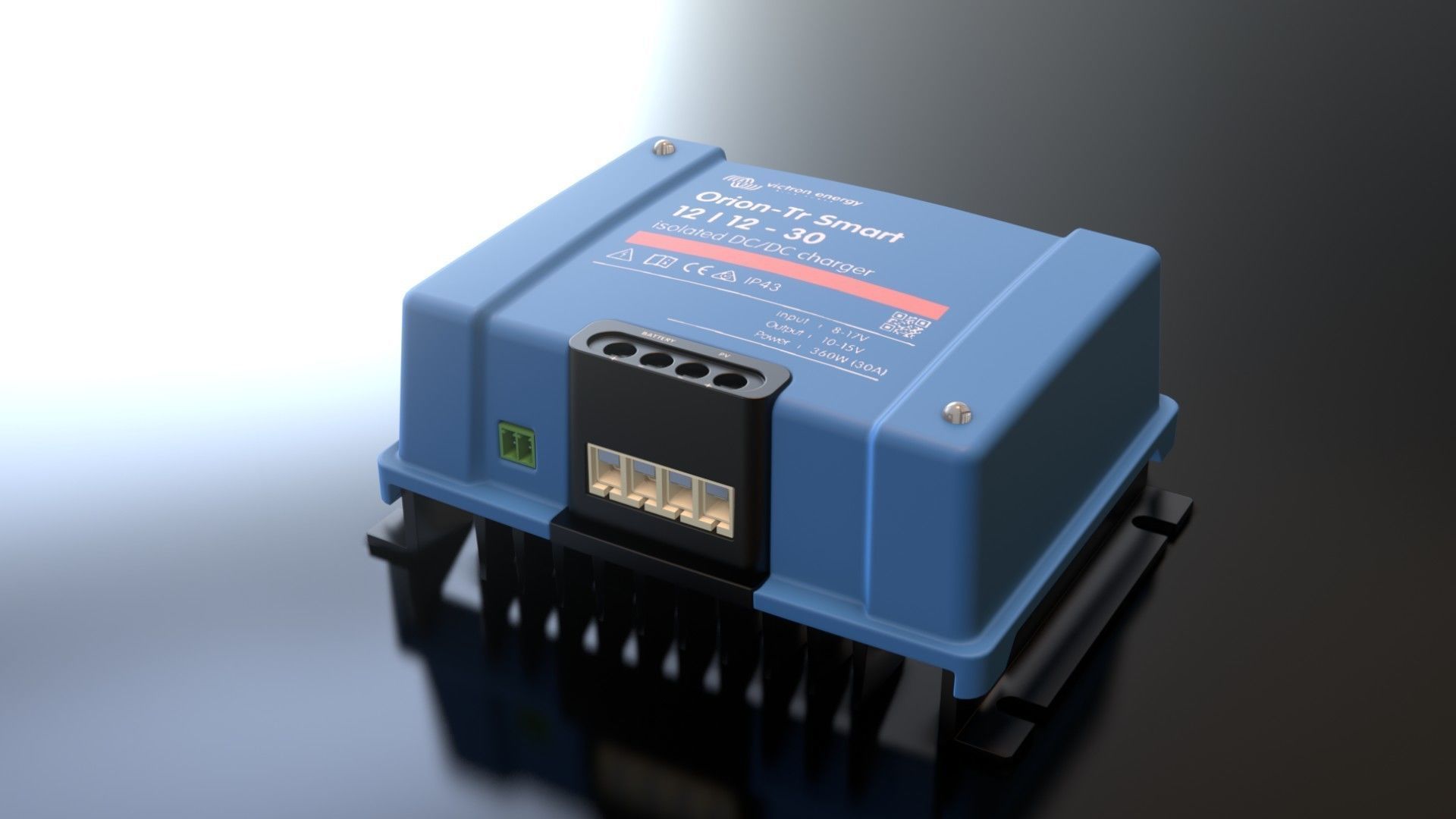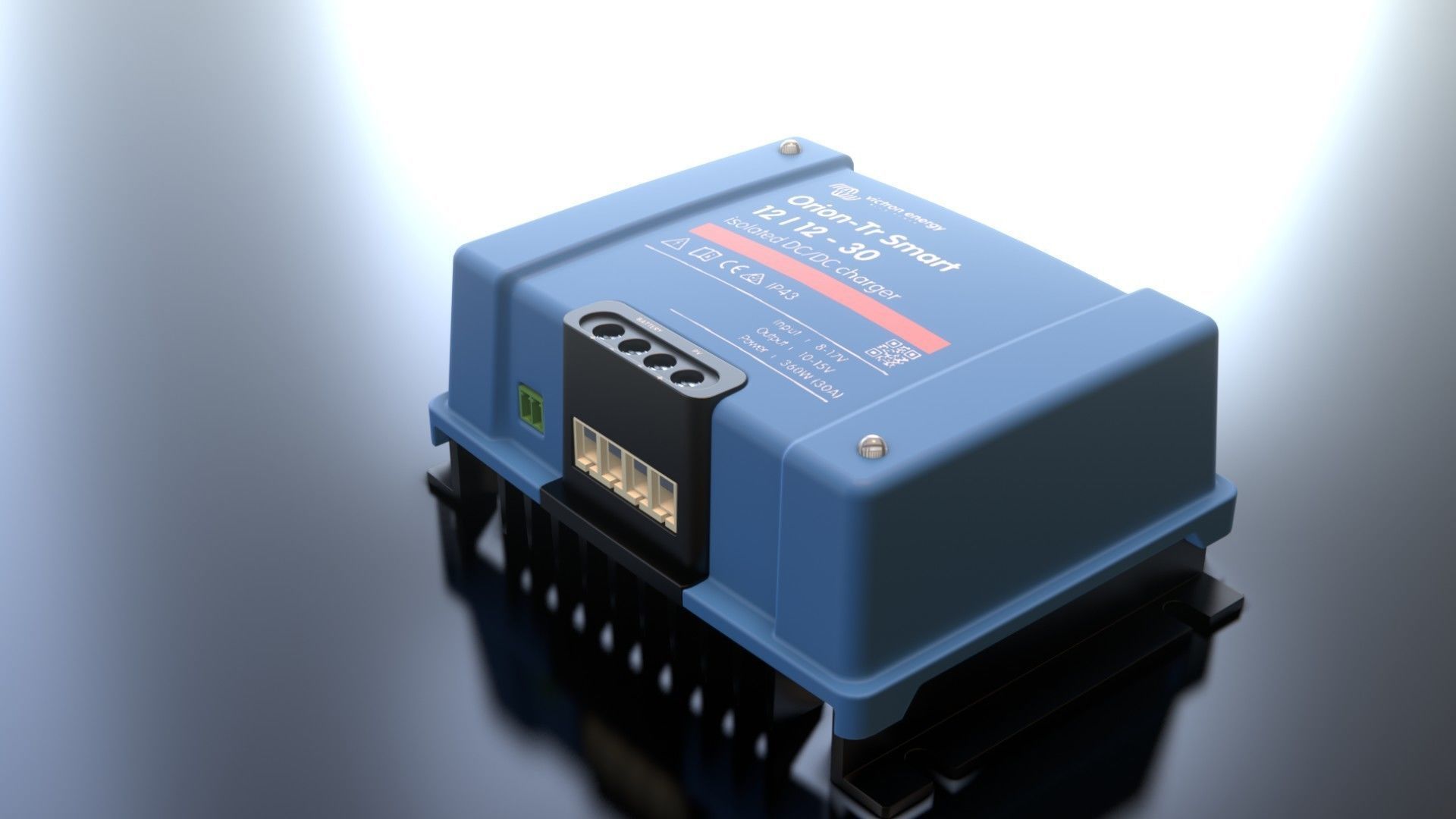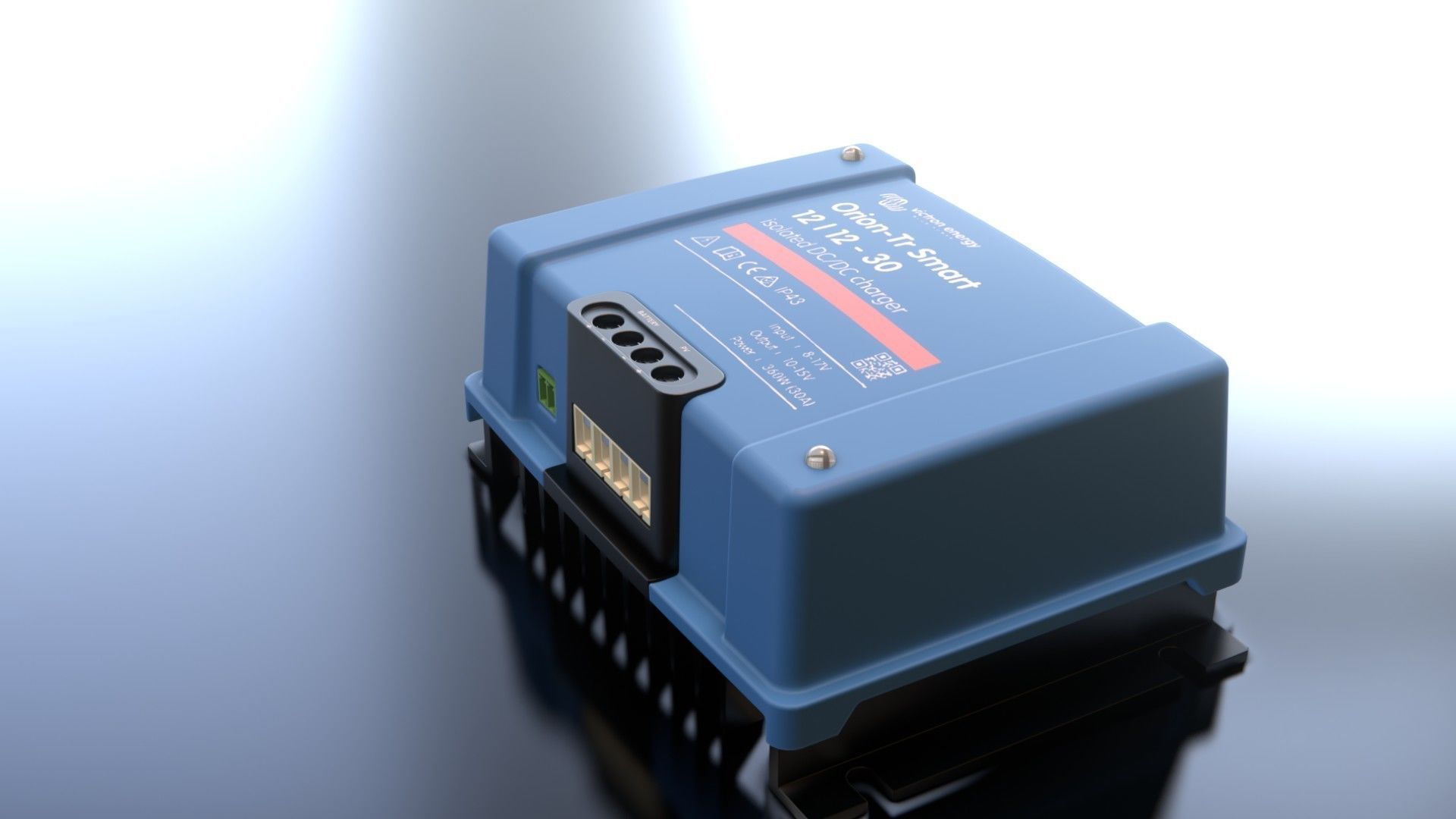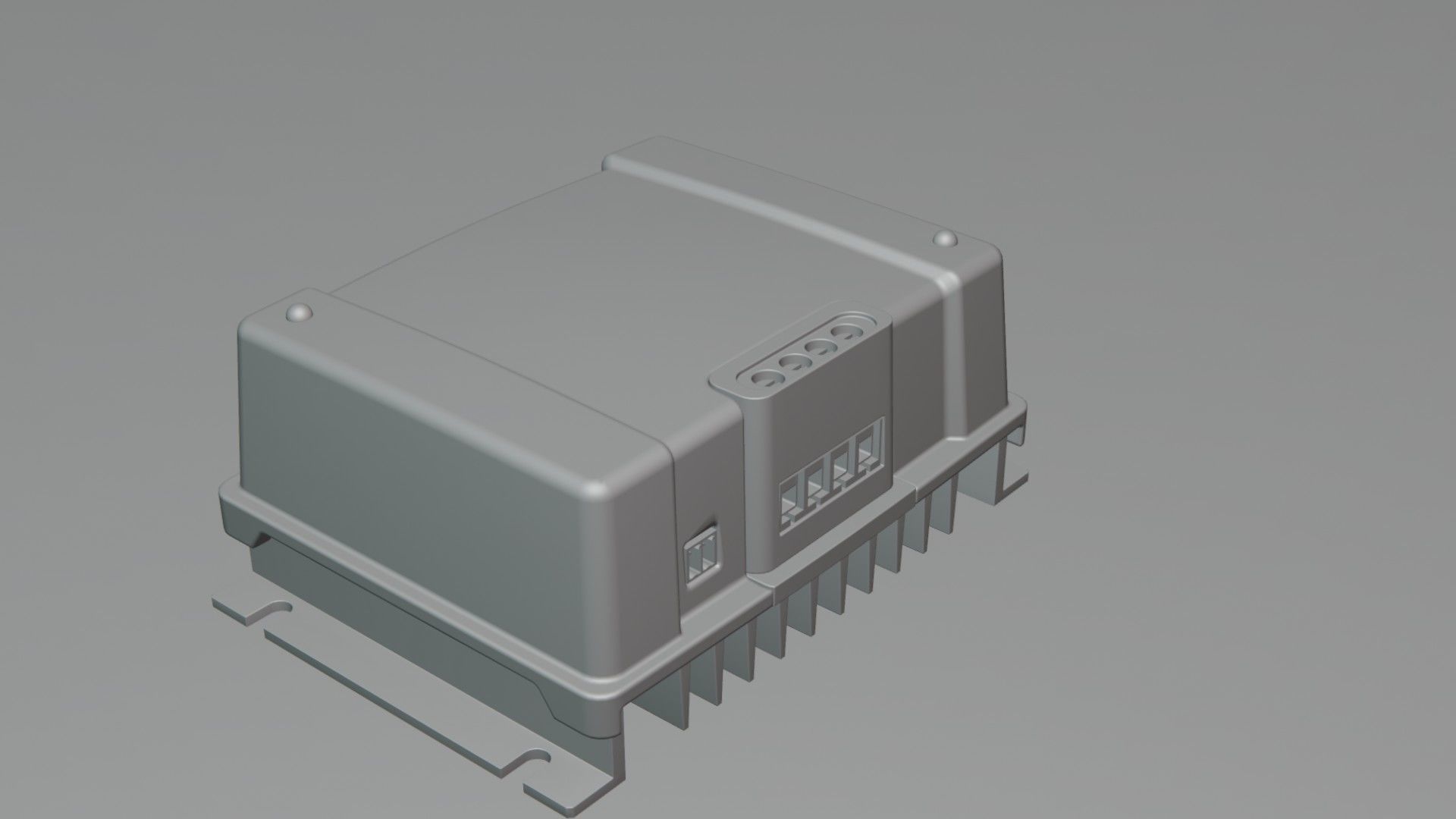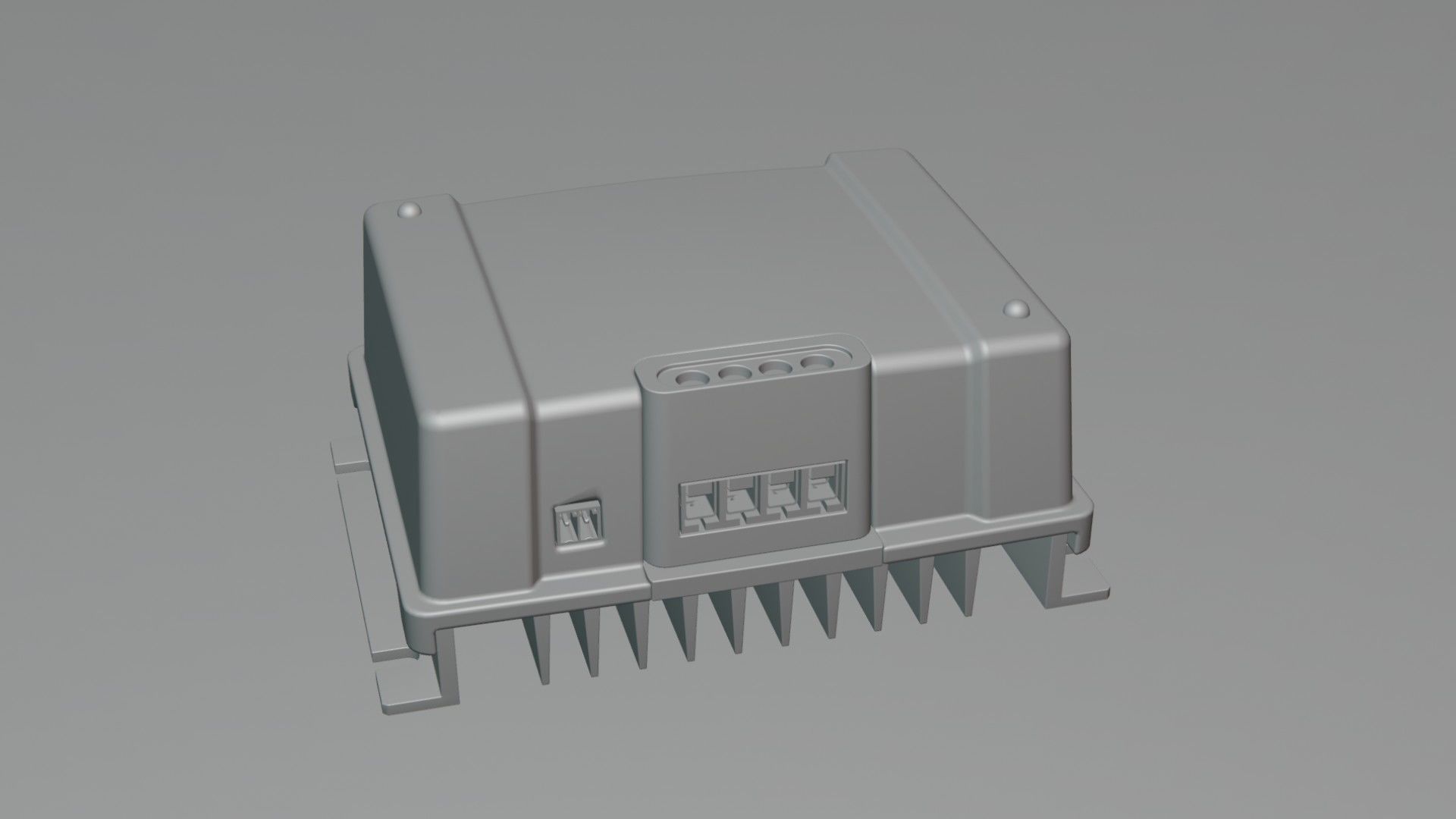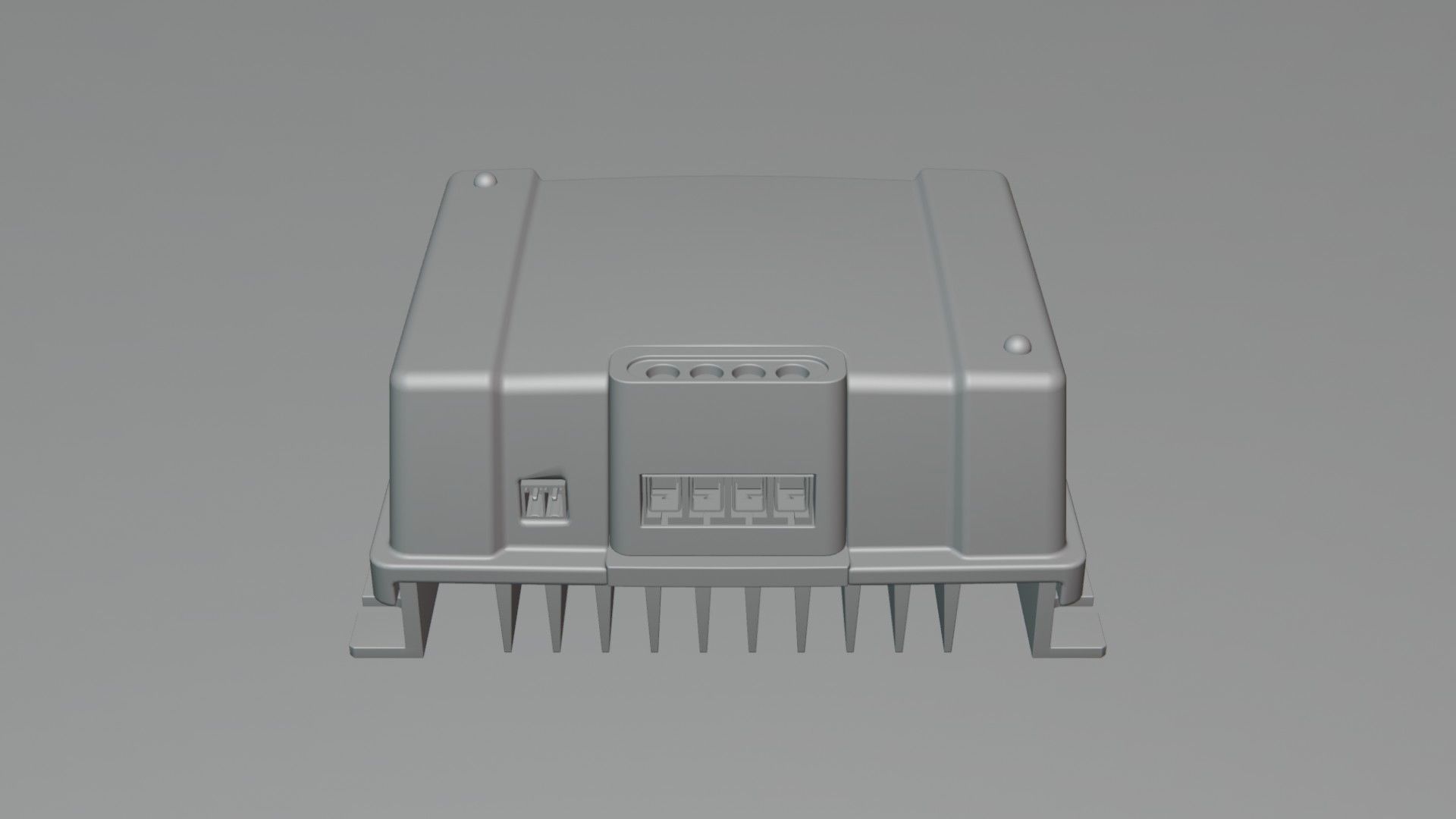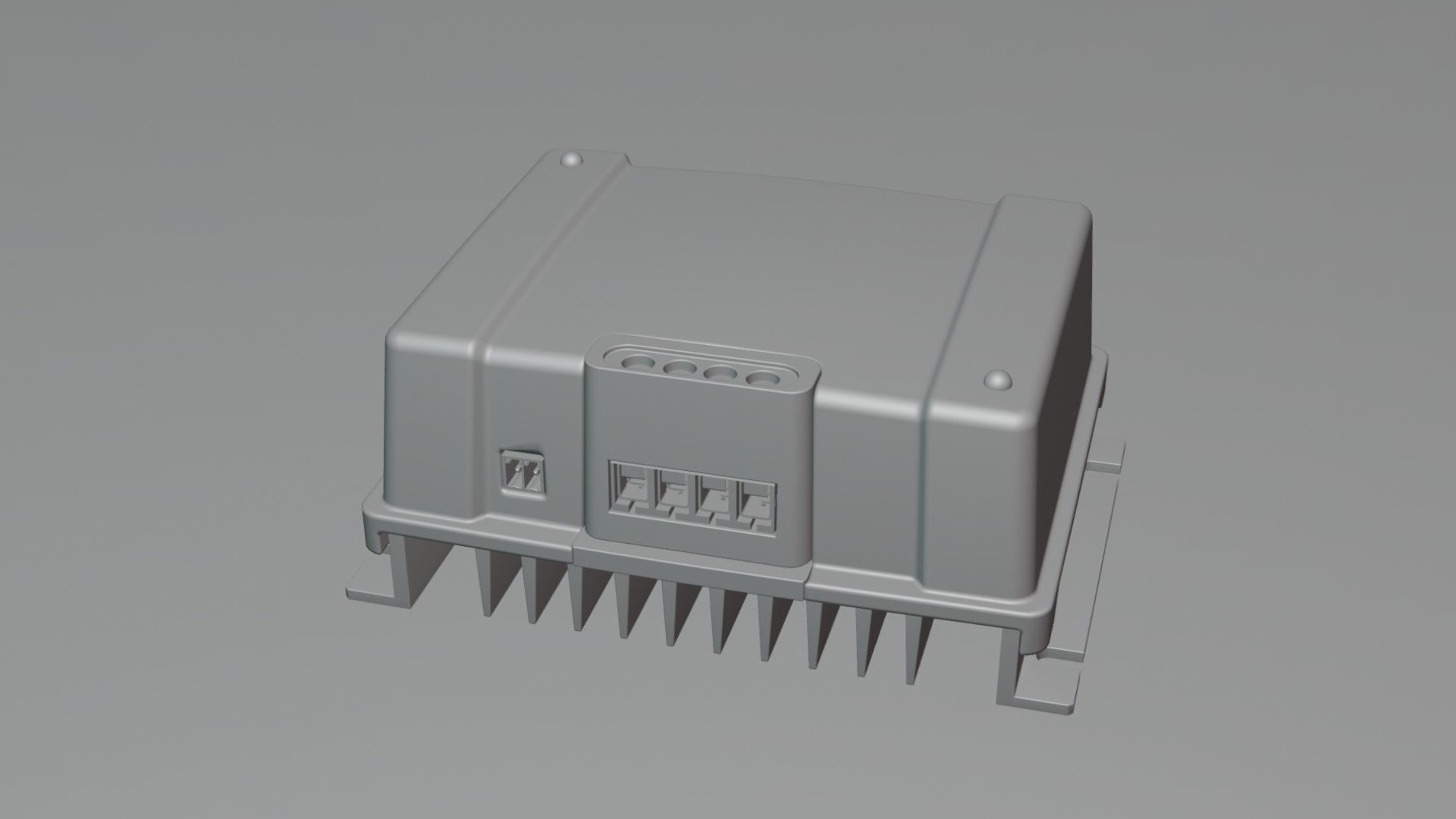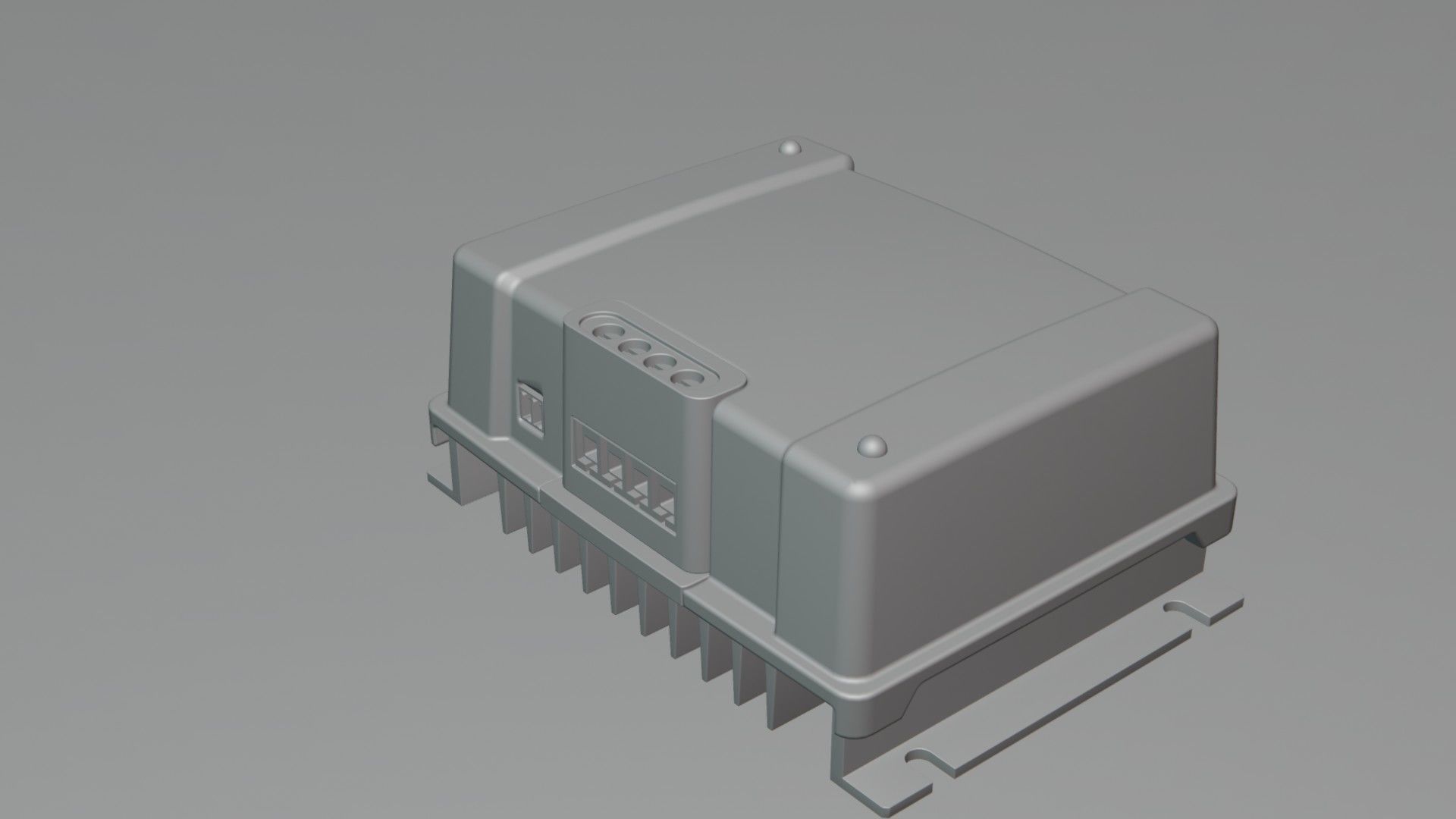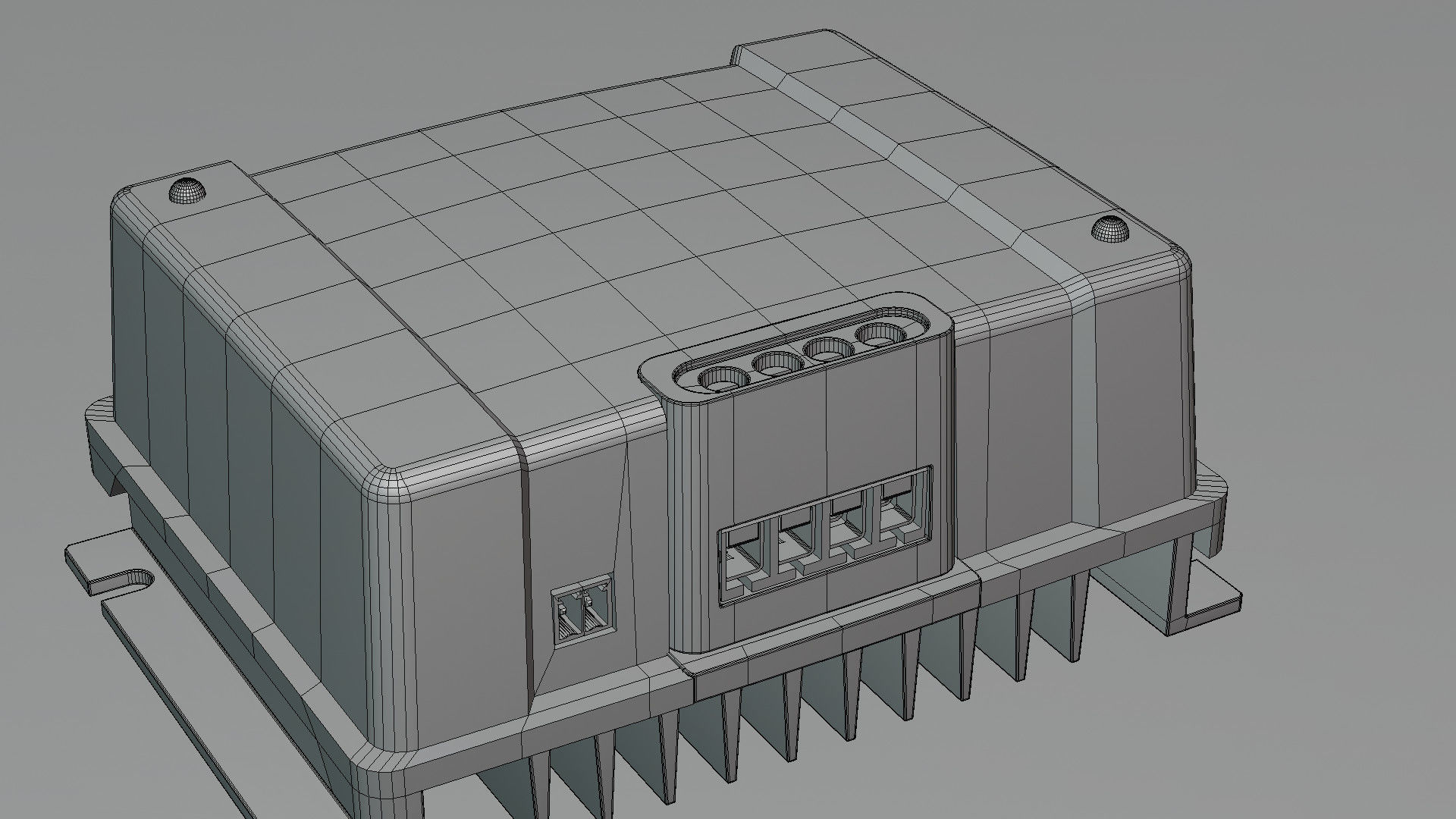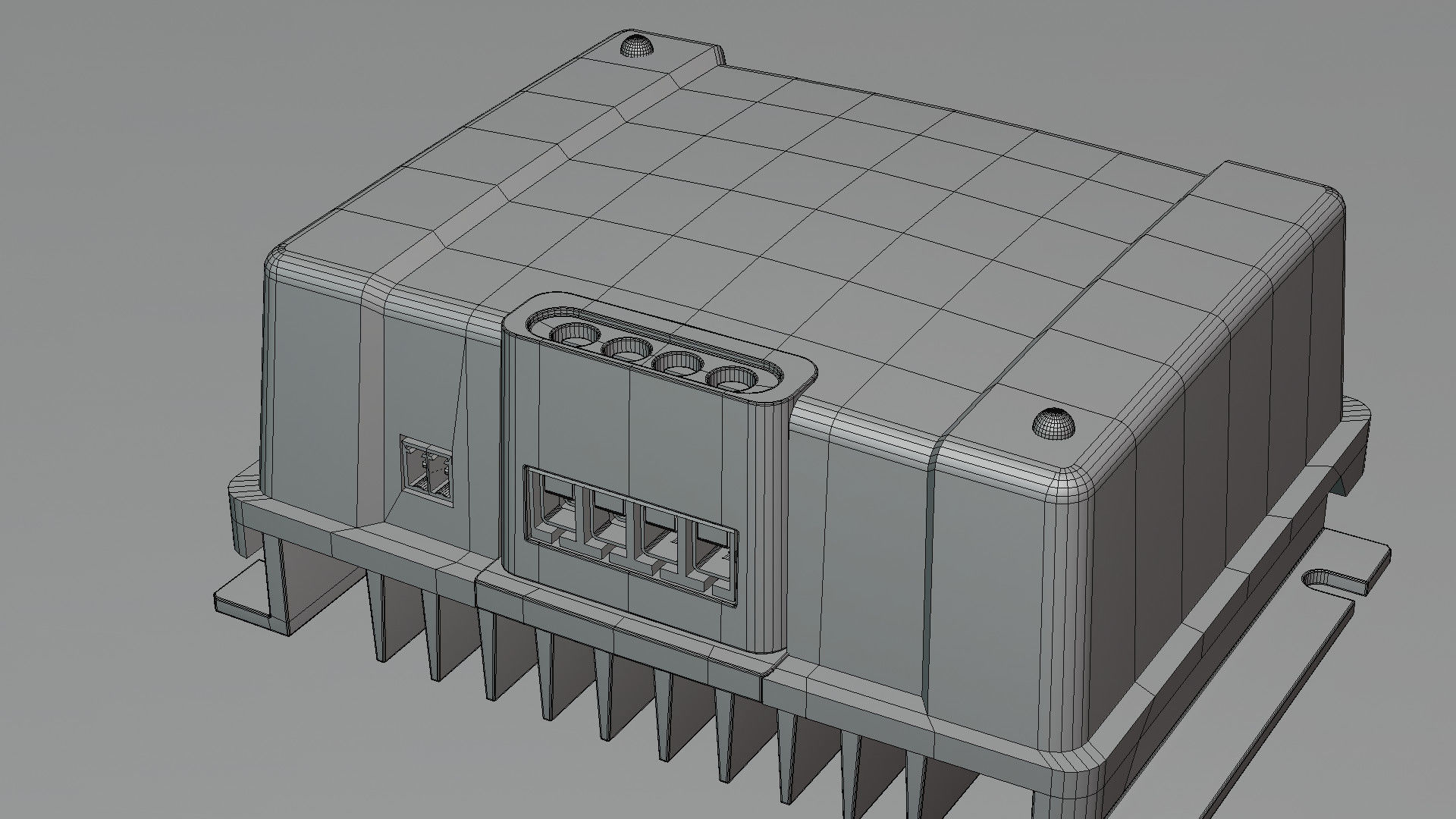
victron energy orion TR Smart 12 12 30 3D model
PBR Materials Maps are included
This is an isolated DC-DC converter intended to give a steady 12.5 Volt DC output when the input voltage varies between 9 and 18 Volts. Both input and output leads are electrically isolated from each other. Use for power conditioning and isolation.Practical electronic converters use switching techniques. Switched-mode DC-to-DC converters convert one DC voltage level to another, which may be higher or lower, by storing the input energy temporarily and then releasing that energy to the output at a different voltage. The storage may be in either magnetic field storage components (inductors, transformers) or electric field storage components (capacitors). This conversion method can increase or decrease voltage. Switching conversion is often more power-efficient (typical efficiency is 75% to 98%) than linear voltage regulation, which dissipates unwanted power as heat. Fast semiconductor device rise and fall times are required for efficiency; however, these fast transitions combine with layout parasitic effects to make circuit design challenging.
